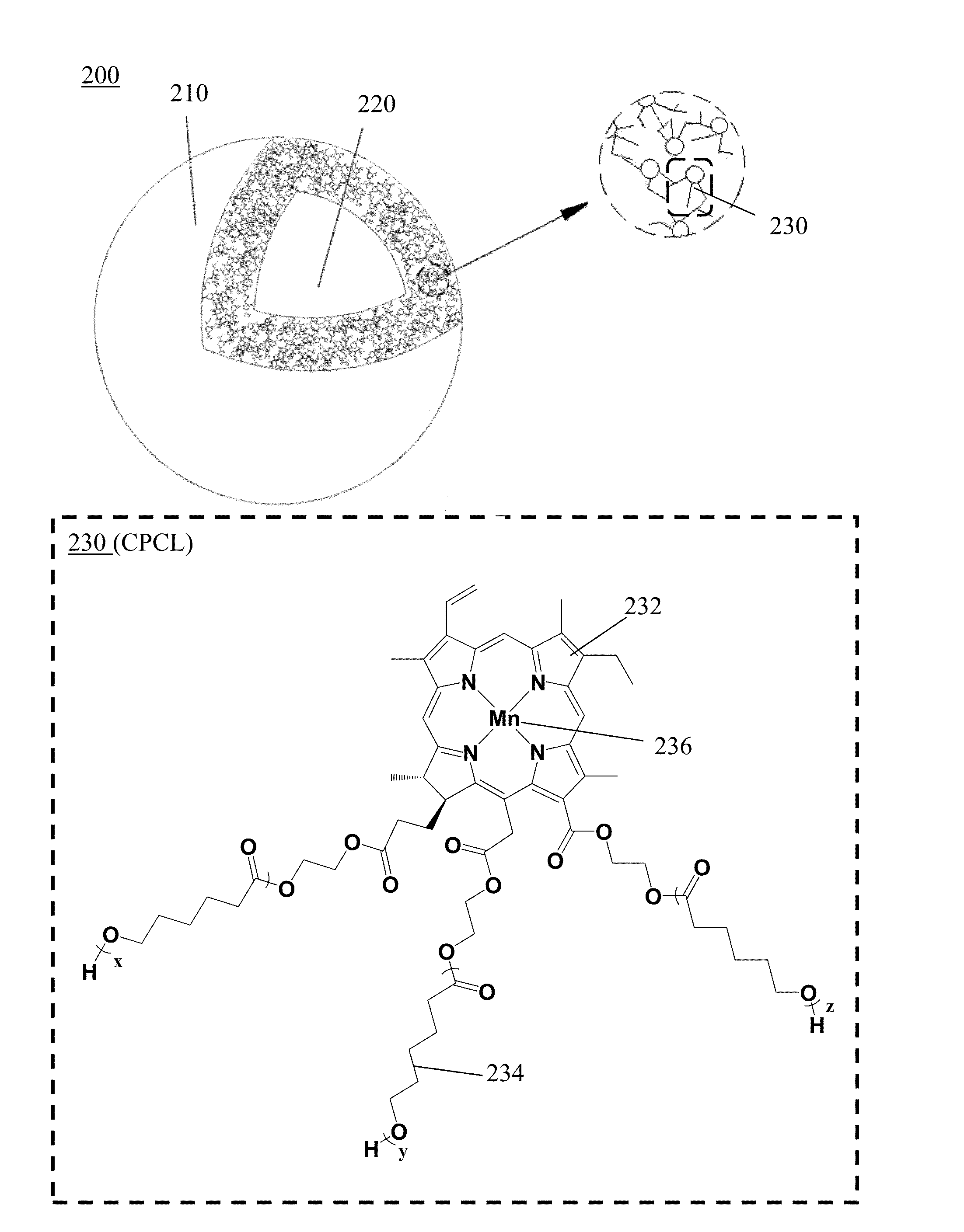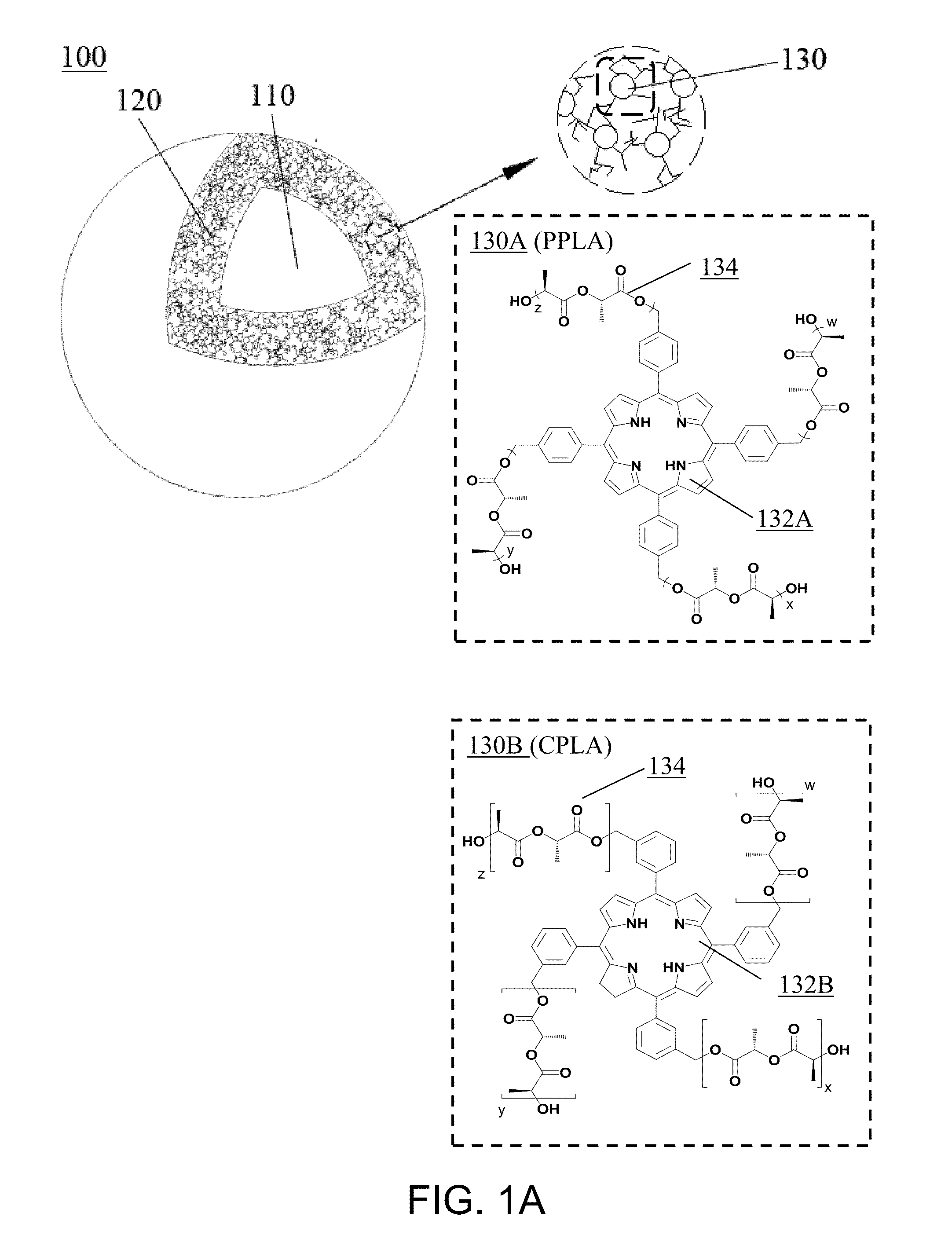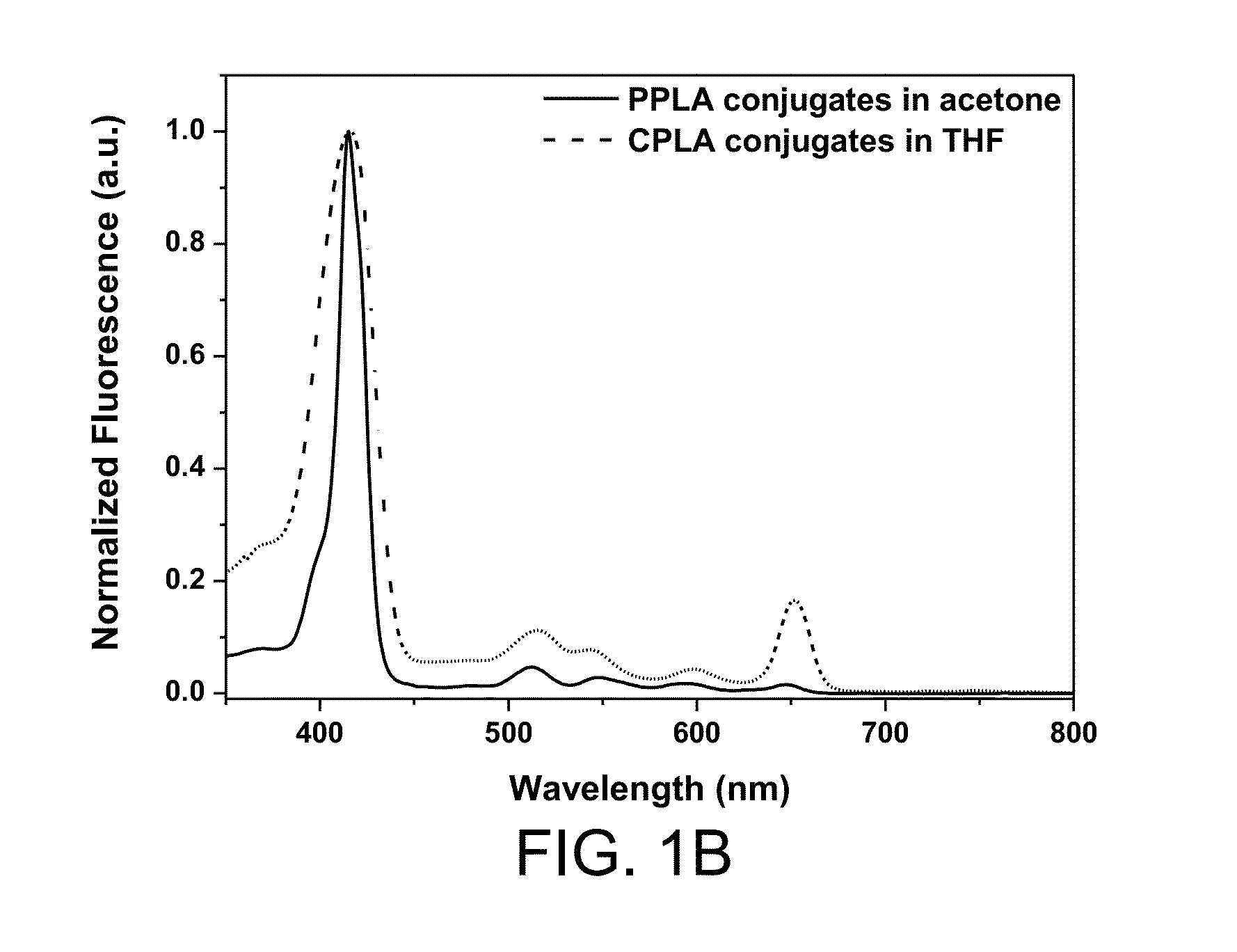Photosensitizer particles for medical imaging and/or photodynamic therapy
- Summary
- Abstract
- Description
- Claims
- Application Information
AI Technical Summary
Benefits of technology
Problems solved by technology
Method used
Image
Examples
example 1.1
PPLA
[0109]The whole preparation process was conducted under dry nitrogen. Solvents and reagents were dried by refluxing for at least 24 hours over sodium / benzophenone (for hexane, toluene, and THF) or anhydrous magnesium sulphate (for benzyl alcohol). L-Lactide was recrystallized from a toluene solution prior to use.
[0110]The catalyst for the ring-opening polymerization (ROP) of 4-armed porphyrin-PLA (PPLA) conjugate was prepared as follows. A mixture of N,N-dimethylethane-1,2-diamine (8.8 g, 100 mmol), 2-hydroxybenzaldehyde (12.2 g, 100 mmol), and HCl (aq.) (35%, 0.30 mL) was stirred in absolute THF (30 mL) for 1 day. Volatile materials were removed under vacuum to give 2-[(2-dimethylamino-ethylimino)methyl]phenol (DAIP-H; yellow oil; yield: 18.2 g; 95%). The mixture of DAIP-H (1.92 g, 10 mmol) with Ca(OMe)2 (0.51 g, 5 mmol) was stirred in toluene / THF (20 / 5 ml) at 100° C. for 3 days in a sealed tube, and subsequently surplus Ca(OMe)2 was removed by filtration. Volatile materials we...
example 1.2
CPLA
[0115]In the present example, the 4-armed chlorin-PLA (CPLA) conjugate was synthesized from meta-tetra-3-hydroxymethyl phenyl chlorin (m-THMPC).
[0116]The m-THMPC was synthesized as follows. First, NaBH4 (0.425 g, 9.25 mmol) was added at −5° C. with continuous stirring for 30 minutes to a solution of dialdehyde 1 (5 g, 37 mmol) in a mixture of dry EtOH (75 ml) and THF (100 ml). The mixture was then stirred for 10 hours, and the temperature was maintained at about 0 to −5° C. while stirring. The reaction mixture was then neutralized with 2M HCl to pH 5 before the solvents were evaporated. Thereafter, water (200 mL) was added to the residue which was then extracted with AcOEt. The combined organic extracts were dried with MgSO4, and the solvent was evaporated. The product was purified by column chromatography using an AcOEt-hexane (30 / 70) mixture of solvents. Hydroxymethyl aldehyde was obtained as a colorless liquid and the yield was 2.7 g (54%).
[0117]Then, to a solution of 3-Hydro...
example 1.3
CPCL
[0124]The 3-armed chlorin-PCL (CPCL) conjugate was synthesized by ring-opening polymerization as follows. The chlorin (0.3 g, 0.5 mmol) and sodium carbonate (1.05 g, 10 mmol) were dissolved in THF (40 mL). The reaction mixture was stirred for 10 minutes at 0° C., and then thionyl chloride (1 mL, 13.90 mmol) was added, and the reaction mixture was stirred and warmed up to room temperature for 3 hours. Excessive amount of ethylene glycol (2 mL, 30 mmol) was added for reaction for 1 day. Volatile materials were removed in vacuo, and the residue was re-dissolved in water (30 mL), and then extracted three times with carbon dichloride (20 mL). The organic layer was collected and dried in vacuo to give green powders. The green powders, stannous octoate (0.324 g, 0.8 mmol), and 2,2′-ethylidene-bis(4,6-di-tert-butylphenol) (EDBP-H2) (0.351 g, 0.8 mmol) were dissolved in toluene (10 mL). The reaction mixture was stirred at 100° C. for 1 hour, and then ε-caprolactones (4.56 mL, 41.04 mmol)...
PUM
| Property | Measurement | Unit |
|---|---|---|
| Length | aaaaa | aaaaa |
| Thickness | aaaaa | aaaaa |
| Length | aaaaa | aaaaa |
Abstract
Description
Claims
Application Information
 Login to View More
Login to View More - R&D
- Intellectual Property
- Life Sciences
- Materials
- Tech Scout
- Unparalleled Data Quality
- Higher Quality Content
- 60% Fewer Hallucinations
Browse by: Latest US Patents, China's latest patents, Technical Efficacy Thesaurus, Application Domain, Technology Topic, Popular Technical Reports.
© 2025 PatSnap. All rights reserved.Legal|Privacy policy|Modern Slavery Act Transparency Statement|Sitemap|About US| Contact US: help@patsnap.com



